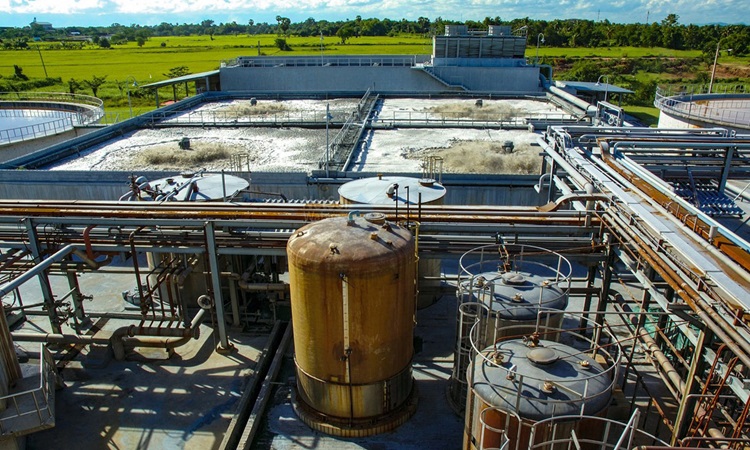Water Treatment Plants: Ensuring Clean and Safe Water for All Purposes

Water treatment plants are the unsung heroes of modern society, quietly working behind the scenes to ensure that the water we use for drinking, bathing, cooking, and various other purposes is clean, safe, and free from harmful contaminants. These plants play a crucial role in safeguarding public health, promoting environmental sustainability, and supporting economic development.
The primary goal of water treatment plants is to remove impurities and contaminants from raw water, making it suitable for human consumption and other uses. Raw water, often sourced from rivers, lakes, or underground aquifers, contains a diverse array of pollutants such as sediments, organic matter, bacteria, viruses, chemicals, and heavy metals. Without proper treatment, this water can pose serious health risks to individuals and communities.
The process of water treatment involves several key steps, each designed to target specific types of contaminants and ensure the overall quality of the treated water.
The following are the main stages typically involve in a water treatment plant:
Coagulation and Flocculation:
In this initial stage, chemicals such as alum or ferric chloride is add to the raw water. These chemicals help to destabilize and aggregate tiny particles and impurities present in the water, forming larger clumps called floc.
Sedimentation:
Once the floc has formed, the water is allowed to sit undisturbed in a large tank, allowing the heavier particles to settle at the bottom. This process, known as sedimentation, further removes suspended solids and impurities from the water.
Filtration:
After sedimentation, the water passes through various filtration systems such as sand filters, activated carbon filters, or membrane filters. These filters trap remaining impurities, including fine particles, bacteria, and organic matter, ensuring that the water is clear and free from visible contaminants.
Disinfection:
To eliminate any remaining pathogens such as bacteria, viruses, and parasites, the water undergoes a disinfection process. Common disinfection methods include chlorination, ultraviolet (UV) irradiation, ozonation, and chlorine dioxide treatment. These methods effectively kill or inactivate harmful microorganisms, making the water safe for consumption.
pH Adjustment and Chemical Balancing:
In some cases, water treatment plants may adjust the pH level of the treated water to ensure it falls within the optimal range for human consumption. Additionally, chemicals such as fluoride or chlorine may be added to prevent dental issues and maintain residual disinfection throughout the distribution system.
Storage and Distribution:
Once treated and quality-checked, the water is stored in clean reservoirs or tanks before being distributed through a network of pipes to homes, businesses, and public facilities. Advanced monitoring systems continuously monitor water quality parameters to ensure compliance with regulatory standards.
The importance of water treatment plants extends far beyond providing clean drinking water. These facilities also play a vital role in protecting the environment and supporting sustainable water management practices. By removing pollutants from wastewater before it is discharge back into natural water bodies, treatment plants help prevent water pollution and safeguard aquatic ecosystems.
The significance of water treatment plants becomes especially apparent during times of crisis or emergency, such as natural disasters, pandemics, or contamination incidents. These facilities are equippe to respond quickly and effectively, ensuring that communities have access to safe and reliable water supplies even in challenging circumstances.
Despite their critical importance, water treatment plants face various challenges and considerations that must be addressed to maintain optimal performance and effectiveness:
- Aging Infrastructure: Many water treatment plants worldwide are operating with aging infrastructure and equipment, leading to increased maintenance needs, operational inefficiencies, and potential risks to water quality.
- Emerging Contaminants: The presence of emerging contaminants such as pharmaceuticals, personal care products, microplastics, and industrial chemicals poses new challenges for water treatment processes. Research and investment in advanced treatment technologies are need to address these emerging threats effectively.
- Climate Change Impacts: Climate change can affect water availability, quality, and treatment processes. Increased frequency of extreme weather events, changes in precipitation patterns, and rising temperatures can impact raw water sources and treatment plant operations, necessitating adaptation and resilience measures.
- Water Scarcity and Demand Management: Growing populations, urbanization, and increasing water demands place pressure on water resources and treatment infrastructure. Sustainable water management practices, water conservation measures, and demand-side management strategies are essential to ensure long-term water availability and reliability.
- Regulatory Compliance: Water treatment plants must comply with stringent regulatory standards and guidelines governing water quality, discharge limits, public health protection, and environmental conservation. Continuous monitoring, reporting, and adherence to best practices are essential to meet regulatory requirements and maintain public trust.
In Conclusion
Water treatment plants play a fundamental role in ensuring clean, safe, and reliable water for all purposes, from drinking and sanitation to industrial and agricultural use. These facilities are essential for public health protection, environmental sustainability, economic development, and resilience in the face of challenges such as pollution, climate change, and water scarcity. Continued investment, innovation, and collaboration are need to address current and future water challenges effectively and ensure access to quality water for generations to come.